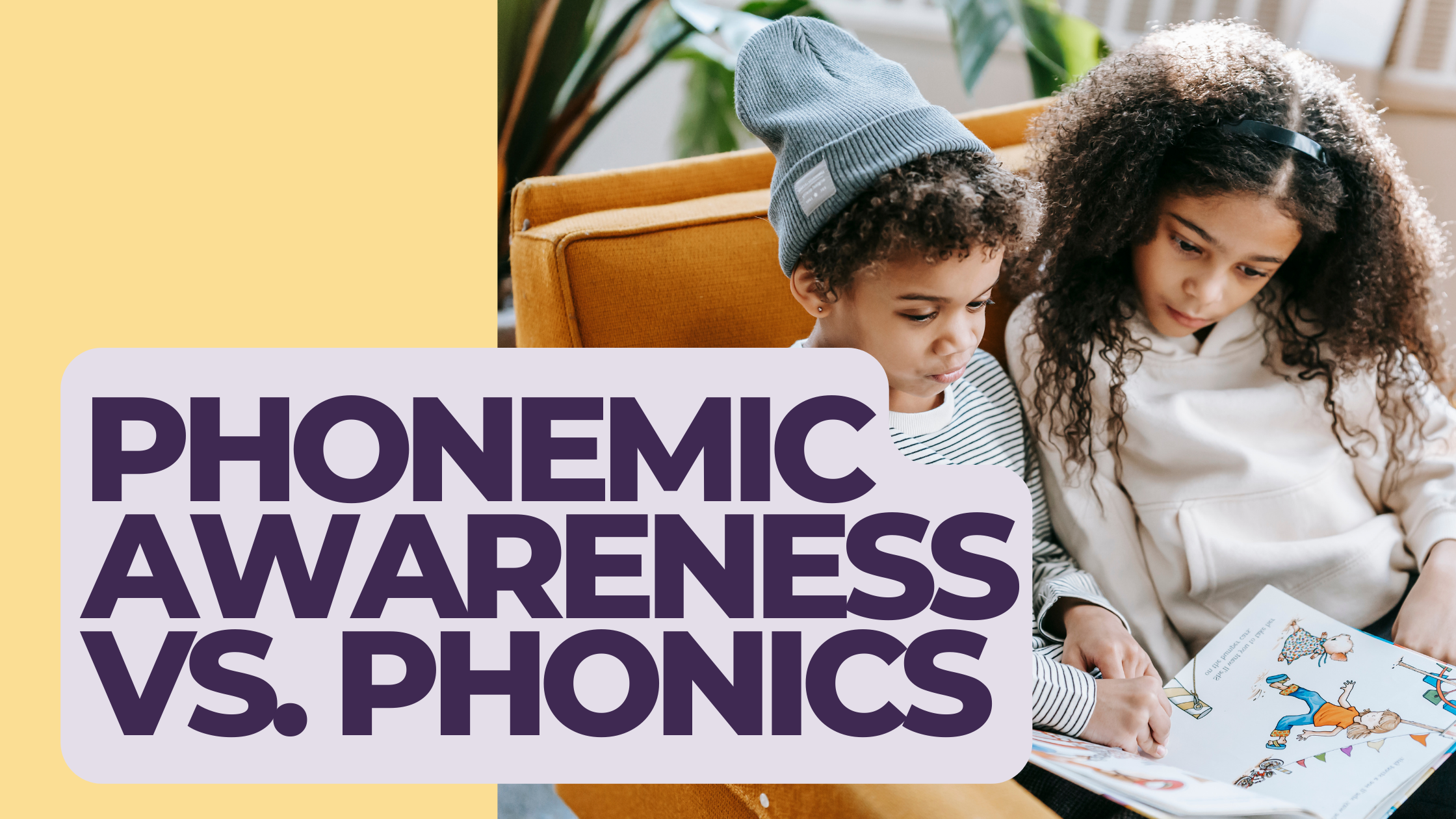Understanding the Differences Between Phonemic Awareness and Phonics in Reading Development
When it comes to teaching children how to read, two terms often come up: phonemic awareness and phonics. Though they may sound similar and are both essential components of reading development, they are not the same thing. First of all, phonemic awareness is what happens in the dark. In other words, it is all oral. The child can hear the sounds. In phonics, we are dealing with the print. This blog post will examine the differences between phonemic awareness and phonics, and how each contributes to a child's ability to read.
Phonemic Awareness: The Building Blocks of Reading
Phonemic awareness is the ability to recognize and manipulate the individual speech sounds, called phonemes, in spoken words. It involves hearing and understanding that words are made up of different sounds, and that changing these sounds can create new words. For example, a child with phonemic awareness can identify that the word "bat" has three sounds, /b/, /a/, and /t/. They can also understand that by changing the first sound to /c/, a new word, "cat," is formed.
Phonemic awareness is considered a foundational skill for reading because it helps children understand that letters and words represent sounds. This awareness helps them make the connection between spoken and written language, which is crucial for learning how to read.
Phonics: Decoding the Written Language
Phonics, on the other hand, is teaching children the correspondence between letters (graphemes) and their respective sounds (phonemes). This helps them decode, or "sound out," written words. Phonics instruction teaches children the different sounds that letters can make, as well as how to blend those sounds together to form words.
While phonemic awareness focuses on the sounds of spoken language, phonics instruction deals with the written representation of those sounds. Through phonics, children learn to match the sounds they hear with the letters they see, allowing them to decode new words and improve their reading ability.
The Relationship Between Phonemic Awareness and Phonics
Phonemic awareness and phonics are closely related but distinct skills in reading development. Phonemic awareness lays the groundwork for phonics by helping children understand that words are made up of individual sounds. Once they have developed this understanding, they can move on to learning how those sounds correspond to letters through phonics instruction.
It's important to note that while phonemic awareness is a necessary precursor to phonics, it does not guarantee that a child will automatically grasp phonics concepts. Phonemic awareness and phonics must be taught to ensure a child's reading success.
In summary, phonemic awareness and phonics are essential components of reading development that work together to help children become proficient readers. Phonemic awareness focuses on the ability to recognize and manipulate the sounds in spoken language, while phonics teaches children how to decode written words by connecting letters to their corresponding sounds. By understanding the differences between these two concepts and how they relate, educators and parents can provide a solid foundation for children's reading skills. If you see that phonics alone is not helping your child blend sounds, sign up for a free online reading assessment to discover what is causing a weak foundation for your child.

